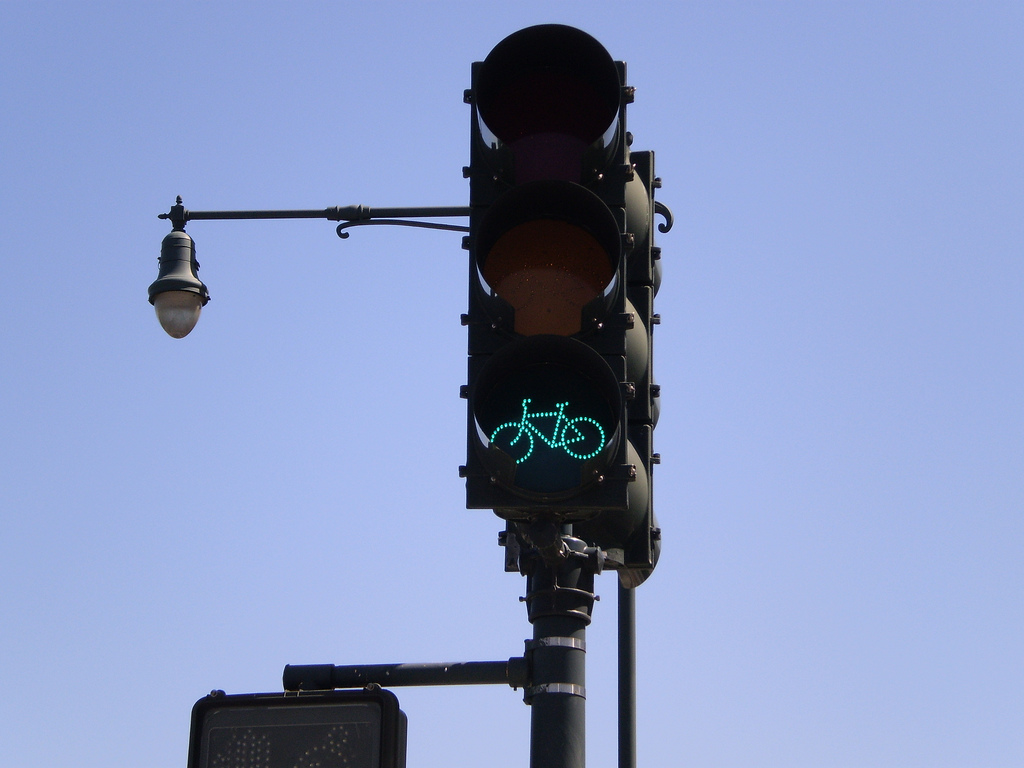It’s not all about the painted lanes, folks. In an effort to make streets more bike-friendly, more than 16 U.S. cities have embraced traffic signals just for bike-riders.
The lights are standard in Australia, Germany, the Netherlands, and Sweden, and over the last couple years have started gaining traction in America, according to a study commissioned by the Oregon Department of Transportation and the Federal Highway Administration.
Bicyclists can be at risk when entering an intersection on a yellow light that allows enough time for cars to clear the intersection, but not for bikes, the study found. Even traditional green lights may not allow enough time for a bicyclist starting from a stopped position to make it across. Bicycle signals can also help prevent collisions when a motorist is turning right and a cyclist is going straight, by allowing the cyclist a few seconds head start.
Some bicycle signals stand alone, while others are incorporated into regular traffic signals. Some are timed, while others are activated when a bicyclist approaches the intersection, the study found.
Over the last few months, adoption has picked up as Chicago, Atlanta, and Salem, Ore., have all installed the new signals, to cyclists’ delight.
Salem resident Joel Cleland, 39, rides his bike two miles to and from work each day. His route takes him past the new signal.
“It’s a lot quicker and easier to make my way through that intersection now,” Cleland said. “I’ve never waited more than 20 seconds for the new light to turn green.”
As for the other kind of green, the lights in Salem cost just $1,000 each, compared to $80,000-$100,000 for a whole new traffic light.





